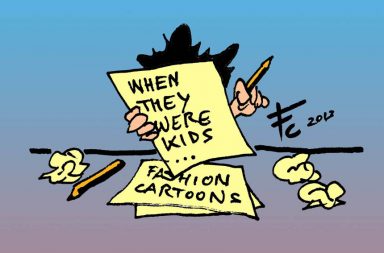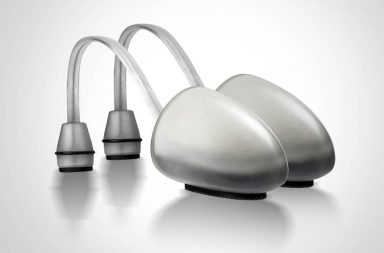After he leaves his office, Dr. José Antonio Moralejo heads to his workshop where he gives free reign to his creativity designing jewellery. Science and Art are two equal parts of his life, combining to form the perfect duo.
José Antonio is a specialist in the prevention, diagnosis and treatment of diseases of the mouth and surrounding area and he assures us that, as hard as it may be to believe, both professions have more in common that people realize.

It was only four years ago that he began to make jewellery but looking at his work you’d think he’d been at it for years. His pieces are sophisticated and modern and he has an ability for contemporary jewellery. In our opinion, his mastery of the craft puts him in league with some of the greats.
Since José doesn’t promote himself, we came across his Facebook page by coincidence and couldn’t find any more information about him. The source of this humility is most likely the relatively short amount of time he’s been in the field.
At So Catchy! Where Fashion Begins we think you should follow this hidden treasure, and that José should keep amazing us with his creations.

So Catchy!: Many people say that jewellery design and your day job in Oral Medicine don’t have much in common. Are your choice in specialty and creating jewellery related in some way?
JOSÉ ANTONIO MORALEJO: A typical question for people who’ve started studying medicine is what specialty they want to study once they’ve finished their degree. My response was always the same: I don’t know what I want to do but one thing I know is that I’ll never be a stomatologist. This lasted until, by accident, I accompanied a relative to have one of their fractured teeth repaired. I saw the delicacy and sensitivity that the professional had when trying to recreate the shape, structure and dental transparency and the artistry forever changed my opinion about the profession. At that moment, I realized that this might be the specialty that gave me the most freedom to work with my hands and I knew that I would end up here.
Both professions have much more in common that one would think at first. They share tools and techniques, both are eminently handicraft and require attention to detail and their objective is to create beauty, on the one hand by imitating nature and on the other by letting your imagination free.
In 1604, Don Quijote saw this interrelation when he told his squire: “I want you to know, Sancho, that a mouth without molars is like a mill without a stone, and a tooth should be valued much more highly than a diamond.”
SC!: How did you train as a jewellery maker?
JAM: My training in this field has been unique in that I haven’t followed a conventional academic path. It all started a few years back when I was flipping through a technical manual on jewellery and it was so interesting that I began to build my own library and to study the subject avidly. At the same time, through specialized forums and communications platforms, I got to know more about trends in contemporary jewellery.
From that point, my theoretical knowledge had a certain level but I had to find a way to apply it practically and that wasn’t so easy so I needed to attend either a formal school or jewellery workshop. The first option wasn’t possible because of my day job so I opted for the latter. I got in touch with a workshop in Barcelona and over 4 full days, I tried to learn as much as possible. For the first time I could see how they casted and soldered metals, how they worked in different ways according to the forces they were subjected to, how their aspect changed according to the finishes that were applied to them.
Between my desire to start putting my new skills to use and my nervousness about achieving results that weren’t as I had hoped, I enthusiastically started my career and I’ve never once lacked inspiration or a desire to experiment.
Dedicating myself more exclusively to jewellery would require more training in new techniques so I could apply them to my creations.

SC!: Not having studied design, I must say that your pieces are very sculptural and they feel very progressive. Where do you turn for the inspiration for your pieces?
JAM: Design is one of those fields that has always interested me. I’d occasionally sketch things like lamps or furniture or a motorcycle. I remember that my first source of inspiration came from the two encyclopedias that my parents bought to help me with my studies. I devoured the photos that were on every page and whenever I saw something that was surprising or different, I’d mark the page. In the end there were so many pieces of paper sticking out of the books that they looked as if they were unfinished books that hadn’t had their edges trimmed. Nowadays it’s much easier to find information and I use whatever I can, books, magazines, the Internet, museums, etc.
SC!: Why draws you to use steel so often in your work?
JAM: Perhaps it’s the fact that the material was more familiar to me when I started with jewellery since I’d already worked with it in other fields. Or it could be steel’s ability to transmit completely different feelings depending on what you do with it and how you finish it. It’s warm when it’s sanded or rusty, distant and cold if it’s polished or blued and so on. The biggest problem is that it is not very malleable or ductile so it is difficult to work with.
Anyways, I will work with any material to create my jewellery, limited only by my knowledge of the material in question and then only at times. Despite my taste for steel, gold and silver are the metals that I use most in my designs.

SC!: Which precious stones do you prefer to work with?
JAM: I don’t really have a preference and each one, in many cases, inspires the final product. I don’t look for a stone for a piece of jewellery, I make a piece of jewellery for a stone. I tend to prefer naturally finished stones but I as far as finished stones go, I guess I prefer to use polished diamonds for their simplicity and elegance.
SC!: How do you plan your days so you have time to work in your clinic and to create?
JAM: The only time that I truly plan for is in my clinic for obvious reasons. After that, the chaos begins. I do have long weekends but I have so many hobbies that at times, I have to cut back on sleep to get any work done. Quite often when I lie down and close my eyes I start to get ideas and can only get some rest after I get up and sketch them out. This wouldn’t be a problem for someone whose sole job is to make jewellery as they could simply wake up later but for me, my first patient doesn’t know what I do in my free time and is waiting for me at 9 in the morning.

SC!: Do you see your work in jewellery as an enriching hobby or would you like to dedicate yourself to it 100% some day?
JAM: It’s a difficult choice. My curiosity and passion drive me to make jewellery full time and a part from being an activity that completely absorbs me when I’m doing it, I’m aware that when I do dedicate more time to it, my ideas and designs multiply and are more fluid and interesting. The ideas come to me as if following a geometric progression as a function of the time that I dedicate to them. However, it would be difficult to abandon a profession that I like so much and the many patients who have, for years, confided in me. The solution might be in finding a balance between the two.
SC!: Have you sold any of your pieces?
JAM: I’ve never wanted to, possibly out of the fear that I don’t know how to value my work. Surprisingly, I’ve received many offers from people who’ve seen my work on Facebook and, in some cases, I’ve given away the pieces that were asked for. It was a way to satisfy the person who had shown so much interest in my work and, at the same time, I didn’t have to worry about getting the price wrong. I’ve only ever sold one piece, and after much insistence, to an American collector and she set the price, 999 dollars.
SC!: What do you think the average price for your pieces would be then?
JAM: All of my pieces are unique, with different designs, materials and techniques so it’s difficult to set a price and more so since I don’t know how the commercial circuits work. The only point of reference that I have is from the one piece that I’ve sold.

SC!: How would someone get ahold of you if they wanted one of your pieces?
JAM: Right now, the only way to get in touch with me is through Facebook. In the beginning, I didn’t think about creating a webpage since it all began as a hobby and I was sure that my work had neither the quality nor the character or ‘sellable’ pieces. I would, quite simply, upload my pieces to Facebook and wait patiently, although with a degree of embarrassment, for a critique of the work to see if the path that I was on was the right one or whether I should sell my tools and look for another hobby. Surprisingly, I received encouraging messages from artists that I admired, which gave me the motivation and assurance to continue.
SC!: You’ve said that you’ve received some surprising compliments from people you admire in the world of design, who do you admire?
JAM: Many people, some of them well known and others whose work tells their stories. I don’t know if we’re living in a time of high creativity or if we just have access to an unlimited number of new productions.
If I had to name someone who I have special respect for, it would be my first inspiration, and my first true supporter, Catalina Brenes. She’s a marvelous and discrete Costa Rican designer currently residing in Berlin.

SC!: Have you thought about promoting your work more? It was a coincidence that we even found your work on Facebook…
JAM: If some day I decide to go all in on jewellery it would be an absolute necessity to get my work out there through more official channels. Everyone who has found my work so far has just happened upon it.
SC!: Do you plan on selling online?
JAM: I’d only buy jewellery if I could touch it or if I knew the author’s work well. If I keep making original pieces, I think they should be sold through specialized galleries and I think that possibility would only be possible if I were to make a limited number of pieces in a series, making them a bit more affordable as well.

SC!: Name some jewellery designers that you like…
JAM: Seulgi Kwon, Ute Decker, David Huycke, Amira Jalet, … and many more. They all use simplicity and strength in their designs, they’re courageous when trying out new materials and imaginative when creating new and impossible forms. They’re unique and original.
SC!: Are there any design magazines that you follow?
JAM: My favorite are the ones that talk about contemporary design, in any form: architecture, industrial, graphic or jewellery design, etc. Domus, Wallpaper, ON diseño, Klimt2…
All images courtesy of José Antonio Moralejo
Translation and Layout by Michael Padilla




